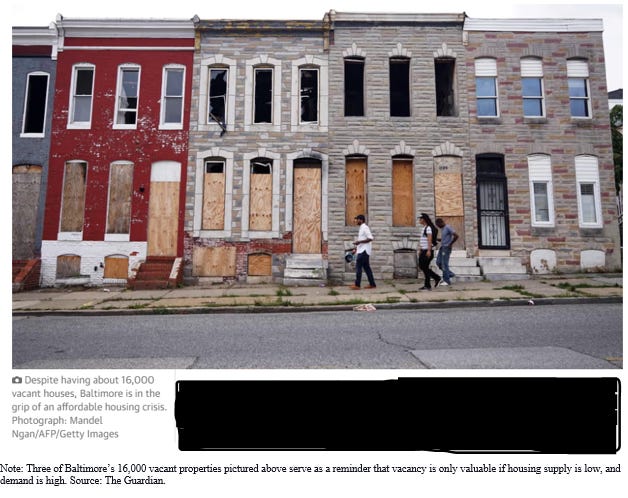In Vacancy We Trust – Substantial Rehabs in NYC
Multifamily investing in NY in a nutshell:
· Step 1: Find a vacant building
· Step 2: See step 1
· Step 3: Profit???
Vacant multifamily buildings have been the pathway to value creation and value capture for investors in major U.S. metro areas for a long time. They offer a shield against downside risk because they will quickly reach full occupancy once delivered. Empty buildings enable investors to do renovations "their way," which matters for owners whose business plans are never to sell. Finally, investors can sell these buildings for a nice margin over the purchase price + the cost of renovations. If the property is in NY, even better -the spread between project cost and net sales price will be that much more significant– but, in some cases, there is a catch.
Two weeks ago, a new relationship asked us to evaluate some vacant properties in Greenpoint for him. This investor wanted to know how the Good Cause Eviction regulation affected his opportunity to profit from the buildings. Given the vacancy, I explained that the law's downside would be minimal to him. He asked about the years following completion, and I conceded that the law would cap rent growth. He suggested performing a Certificate of Occupancy (CO) change. Great! When investors secure new building COs, it exempts those buildings from good cause eviction for 30 years after CO delivery. Still, that's costly, laborious, and time intensive - and the property's location and the property mix on the block may preclude it from achieving those lofty rents. Maybe don't do the CO change.
"Well, how else do we get rid of rent stabilization?"
The state and city of NY have made it harder and harder to remove rent controls from properties in the name of preserving affordability. When organic eggs cost $10, coffee drinks cost $8, and driving south of 59th Street in Manhattan costs $15 (oh wait…), you could say that New Yorkers are feeling the pressures of inflation. An essential contribution to that heightened cost burden is apartment rent prices. 2019's rent regulations have fortunately made it a little easier for tenants on the cliff's edge to avoid the worst. Unfortunately for everyone who rents or owns apartments in NYC, those regulations have also made it economically punitive for owners and investors to invest in the housing stock of New York. That means the mostly +100-year-old housing stock is decaying faster than before. Disincentivizing landlords from maintaining their properties is not commensurate with preserving affordability for the masses. Someone must clean apartments, monitor HVAC, plumbing, and electrical systems, and most importantly, ensure apartments are safe for housing to be considered housing, not just a dead space between four walls.
Keeping the housing supply flat is much worse than building new rental housing exclusively for the rich.
Why? When your older brother grew out of his favorite jeans as a kid, what did he do? Burn them? No, you just got yourself a new pair of great jeans.
For all it does to impede housing investment in the name of affordability, HCR does understand that spending money on housing revitalization in the private housing market must be driven by profit-seeking investment behavior, and that's why it hasn't gotten rid of the Substantial Rehabilitation clause. Operational Bulletin 95-2 rewards investors who do comprehensive transformations of vacant buildings by allowing them to take the property out of rent stabilization. Substantial Rehabilitation opens the door and invites capital towards productive use and investment. In unregulated housing markets, investors could renovate properties and then see what rents they could achieve with minimal government oversight. That's not the case in NY, and several steps are involved in renovating vacant stabilized properties. Still, the reward is that buildings are virtually guaranteed high rents and full occupancy at delivery.
If you're considering a substantial rehab to obtain fair-market units for your building, please see below for a short checklist of the required documents.
Broad Requirements:
· The owner must replace 75% of building and apartment systems. Operational Bulletin 95-2 provides a comprehensive list of building-wide systems.
· The building must have been in a sub-standard or deteriorated condition before the commencement of the work.
Supporting Documents:
· DOB Approved Plans (Architectural)
· DOB Applications and Permits
· Certificate of Completion/Signoffs
· PW3 Cost Affidavit – Initial and Final (template)
· Licensed Engineer or Architect Affidavits (who filled plans)
· Photographs of Building – Pre, During, and After Renovation
· Contracts & Proof of Payments for Work Completed
If investors take the proper steps, HCR will issue a binding determination letter stating that the property has fair market status and is exempt from rent regulation. At that point (or prior), you can solicit me to come and value your building.
I am bullish on NYC Multifamily.
Call me at 212 658 1471



